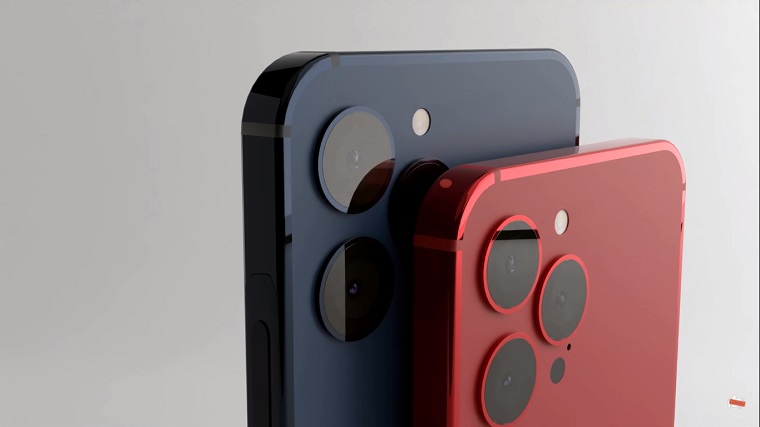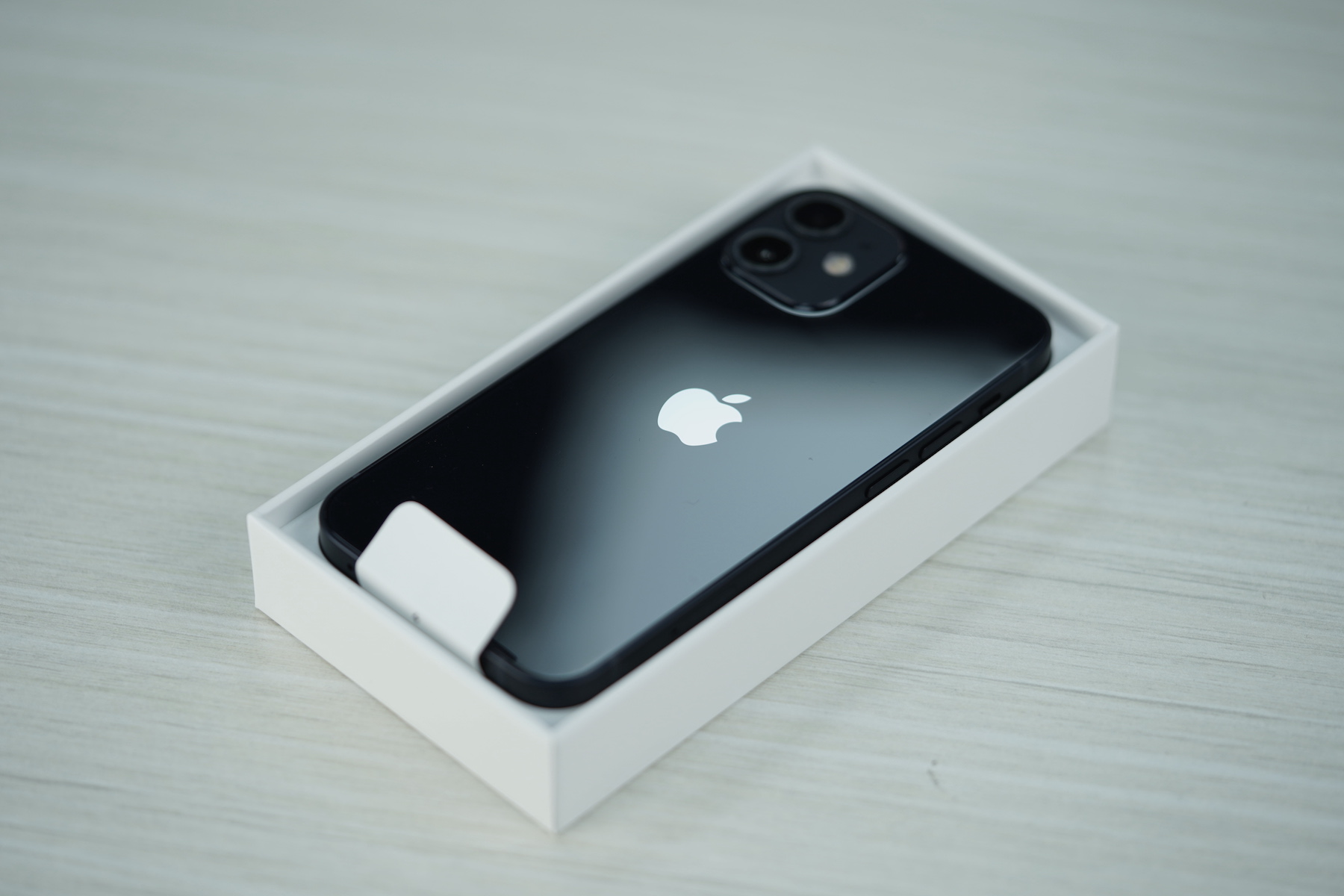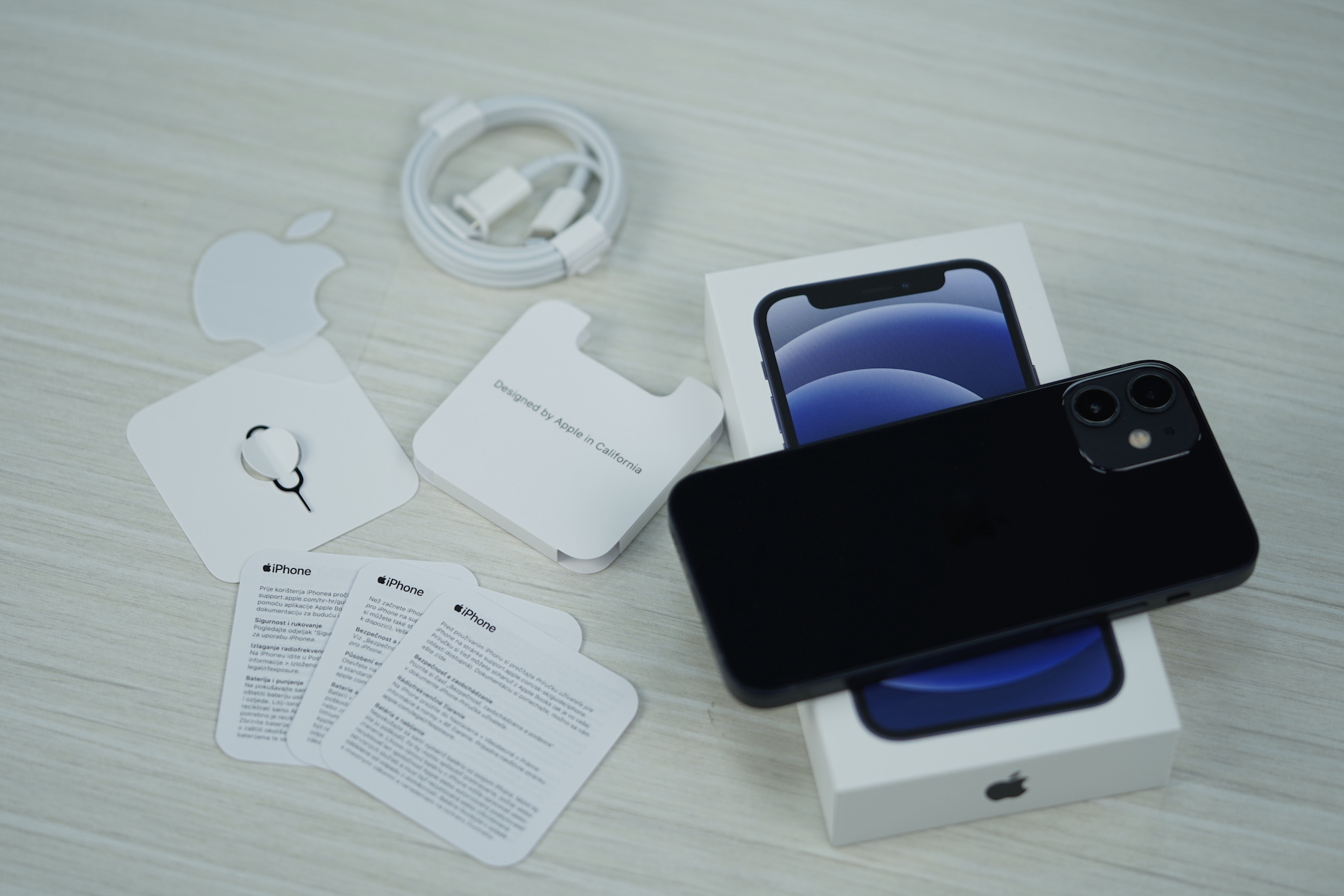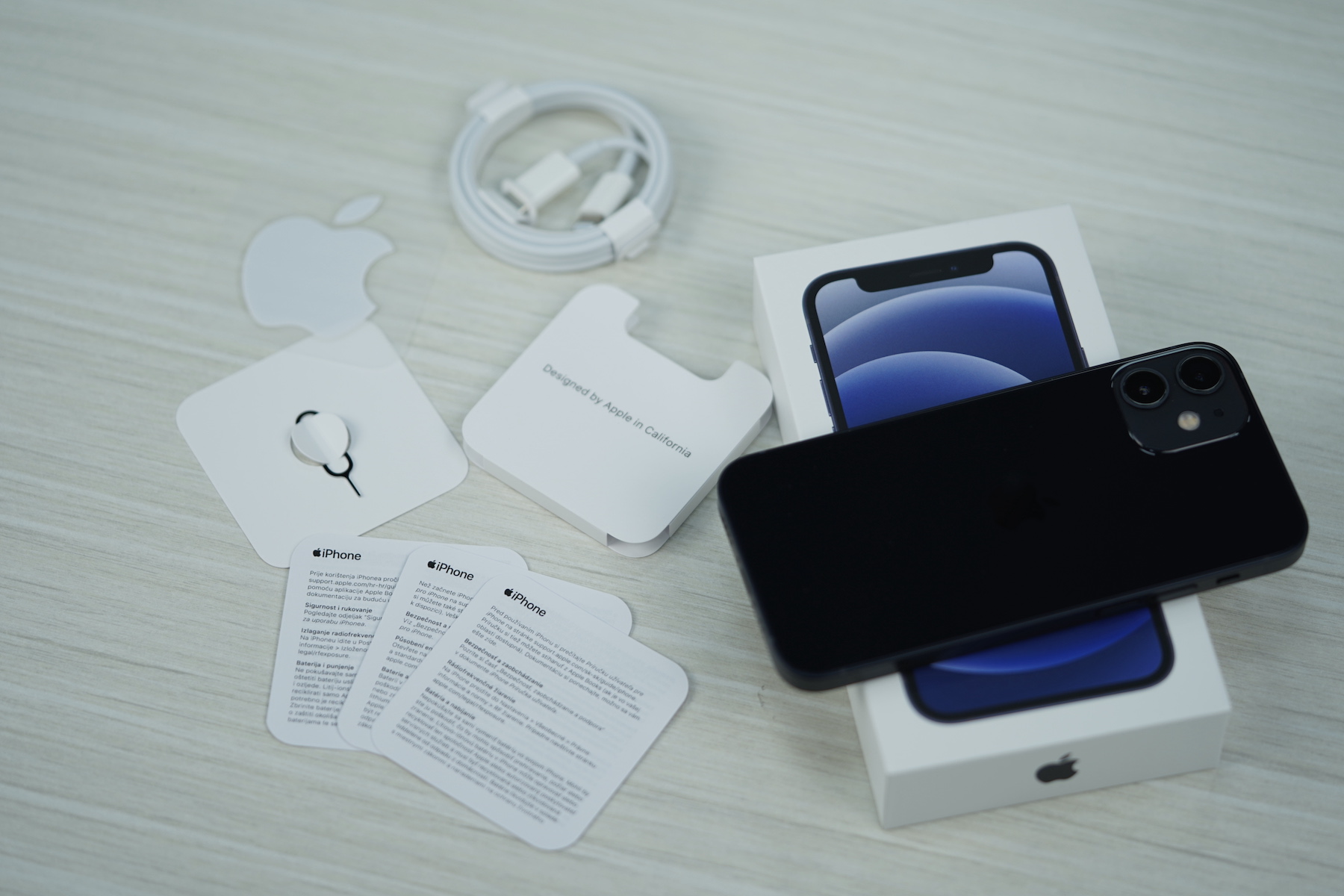When Apple introduced the new iPhone 2020 series in 12, it was able to surprise many Apple fans with a specific mini model. It combined state-of-the-art technology and first-class performance in a compact body. Unlike the SE model, however, it had perhaps no compromises, and it could therefore be said that it was a full-fledged iPhone. Fans were extremely surprised by this move, and even before the new pieces went on sale, there was quite a lot of discussion about how great this little thing was going to be.
It could be interest you

Unfortunately, the situation turned around very quickly. It only took a few months for the iPhone 12 mini to be described as the biggest flop. Apple failed to sell enough units and so its entire existence began to be questioned. Although in 2021 we have yet another version of the iPhone 13 mini, but since its arrival, leaks and speculations have been quite clear - there will be no more iPhone mini. On the contrary, Apple will replace it with the iPhone 14 Max/Plus. It will be a basic iPhone in a larger body. But why did the iPhone mini actually end up being a flop? This is exactly what we are going to shed light on together now.
Why the iPhone mini didn't meet with success
Right from the start, we have to admit that the iPhone mini is definitely not a bad phone. On the contrary, it is a relatively comfortable phone of compact dimensions, which can offer its user everything that can be expected from the given generation. When the iPhone 12 mini came out, I used it myself for about two weeks and was quite frankly thrilled with it. So many possibilities hidden in such a small body looked fabulous. But it also has its dark side. Practically the entire mobile phone market has been following a single trend in recent years - increasing the size of the display. Of course, a larger screen brings with it a number of benefits. This is because we have more displayed content available, we can write better, we can see specific content better and so on. The opposite is true for smaller phones. Their use can be clumsy and inconvenient in some situations.
The most fundamental problem with the iPhone 12 mini was that the phone was slow to even have any potential buyers. Anyone who was interested in a compact Apple phone, the main advantage of which will be a smaller size, most likely bought the iPhone SE 2nd generation, which, by pure chance, entered the market 6 months before the arrival of the mini version. The price is also related to this. When we look at the mentioned SE model, we can see modern technologies in an old body. Thanks to this, you can save several thousand on your phone. On the contrary, the mini models are full-fledged iPhones and cost accordingly. For example, the iPhone 13 mini is sold from less than 20 thousand crowns. Although this little thing looks and works great, ask yourself this. Wouldn't it be better to pay an extra 3 grand for the standard version? According to the apple growers themselves, this is the main problem. According to many fans, iPhone minis are nice and quite stunning, but they would not want to use them themselves.

The last nail in the coffin of the iPhone mini was their weaker battery. After all, the users of these models themselves agree on this - the battery life is not exactly at a good level. It is therefore not unusual that some of them have to charge their phone twice a day. Subsequently, everyone has to ask themselves whether they would be interested in a phone worth over 20 crowns, which cannot last even a day.
It could be interest you

Will the iPhone mini ever succeed?
It is also questionable whether the iPhone mini ever has a chance to succeed. As we mentioned above, the long-lasting trend in the smartphone market speaks clearly – larger smartphones simply lead, while compact ones have long been forgotten. It is therefore not surprising that the apple crumble will most likely be replaced by the Max version. On the contrary, some apple lovers would be happy if the concept of the mini model was preserved and received minor modifications. Specifically, it could treat this phone like the popular iPhone SE and only release it once every few years. At the same time, it would target Apple users who would like an iPhone SE equipped with Face ID technology and an OLED display. How do you see the iPhone mini? Do you think he still has a chance?




 Adam Kos
Adam Kos
Who said the iPhone mini is a flop? Apple picker. He hints at it. The iPhone mini has its supporters who not only want to save money, but on the contrary would pay extra for the smaller dimensions. In my opinion, the iPhone 12/13 versions make absolutely no sense, and if their mini version was at an extra cost, then maybe there would be more supporters of the mini versions, because it would have more prestige. That's the strange behavior of the market.
iPhone minis just don't sell, and it's a stark fact. Say what you want, but that's just the way it is. And what doesn't sell is logically a flop. That you like it is another matter, but - no offense - completely irrelevant. The important thing is that there are obviously very few people like you and this only confirms Apple that there is no point in continuing something similar.
A baseless lie, or bullshit taken out of context. iPhone minis are for sale. The fact that they sell in less volume than other models is just normal. There's always something that sells more and something less, but that doesn't mean that the one that sells less has to be a flop. It simply has its target, and if such a model were not on offer, interested parties would look elsewhere.
iPhone minis aren't selling as well as Apple would like, so it won't be continuing them. Larger devices have more potential for the global market, so it is quite logical that Apple will take advantage of this. And it's not a lie or an unfounded fact, quite the opposite. It is written about everywhere and has been known for a long time. It is true that iPhone minis are sold in the Czech Republic, they are very popular here, but the Czech Republic is completely irrelevant for Apple. You need to look at larger foreign markets, and especially the USA, where iPhone minis are simply not sold. Sometimes you have to look beyond the borders and realize that the Czech Republic is so small that in reality the world's giants are absolutely not interested.
iPhone 12 mini in the US (Oct-Nov 2020 sales) vs. sales for 2019:
https://cdn.arstechnica.net/wp-content/uploads/2021/02/CIRP-iPhone-sales.png
13 iPhone 2021 Series Sales in China:
https://www.counterpointresearch.com/wp-content/uploads/2022/01/Counterpoint-Research-Sales-Proportions-of-iPhone-13-Series-Model-in-China-During-2021.png
And it could continue like this. :-)
The fact that they don't sell is Apple's own fault. The price tag is insane and rightly so - considering it too many compromises, a different display, missing camera, missing technologies from the Pro and of course the stumbling block is the appalling battery life, the 13 Mini is better than the 12 Mini, but it's also terrible. In my opinion, these are the reasons for the unsuccessful sale. Because let's be honest, the size of the current models and also their weight is crazy. You just can't just put those bricks in your pocket and even if you do, they stick out or pull down your whole pants. I have a 13 Pro, before a 12 Pro, before an XS, with the exception of the 11 board, I have had all the models for the last 8 years and with those growing dimensions and weight I am not ok. For me, as an expedition tourist, a Mini-sized model with parameters without a single compromise from the Pro version would suit me, and then I would be willing to pay an amount comparable to the Pro version. Although it is clear to me that a larger body equals a larger battery capacity, but... so the fact that the Mini is a flop, let Apple be responsible for that. Unfortunately, my favorite BlackBerry 10 has been in the grave for many years, honor to his memory.
what compromises are you talking about? iPhone 13 mini and 13 are identical devices, both models have the same equipment. There is only one difference between them - the dimensions (which includes the battery capacity), but it is not true that it is somehow worse than its double in a larger body. You can't lump the classic model with the PRO version
Phew, thanks. I compared Pro and Mini. And I'm sorry if someone claims that I don't know what I'm talking about, that's really out of line. We guys don't know each other and to give such an assessment based on what is written means nothing but to return to the apt comment "foo" again, learn to read.
Peter, you are really off. This is not about Pro phones at all. I hope you understood it by now.
Peter, you are probably writing about something you know nothing about. What compromises? iPhone 12 and 12 mini or iPhone 13 and 13 mini are completely identical devices, differing only in size.
Dyr he talks about Pro. And he's right. Learn to clean.
These discussions are outside of you, dear readers, how old are you, 19, me?
It bothers the cells. I worked as an editor for a well-known Czech mobile portal x years ago, when probably many of you - according to what you write here - were still wearing diapers.
Isn't this about Pro? And based on what? Článok advises that the sales of the Mini are a flop, so I tried to present my point of view on the whole issue regarding the iPhone Mini, where I mainly advised that the size would suit me, but what does not suit me are the compromises with the Pro line, which I use for that very reason , because it offers what I need, especially a wide-angle camera, etc. But the size does not suit me.
And I'm out? No comment baby.
Peter - all iPhones have a wide-angle lens. You just proved what you wanted to prove to us - that you really don't understand.
That price is really terrible. If she answered +-SE, it would be a hit...
The iPhone 13 mini was the only choice for me, unfortunately no one else has a modern phone that fits the bill. Actually, nowadays everyone only makes phablets. I hope Apple comes out with another version, otherwise it will have to wait at least another 10 years
I have three cameras, so I bought it. This is how I have to put up with the Pro, which does not fit me in size.
Same with me. Two cameras like the iPhone X would be enough for me, but it would have to be tele instead of ultra wide like the X had.
Interesting, when I recently bought the 13mini, it was sold out everywhere....
They charge it twice a day, I don't know what they do with that phone, I don't know how it is with the 2 mini, I own a 12 mini and the battery can handle 13 days on one charge, how many times.
I'm one of those people who want a small mobile phone and would gladly pay extra for it (and if it's not from Apple, I'll go back to Android). I need it to fit in my pocket when I go out and not pull my shorts down with its weight when I go for a run. I put the 12 mini in a small back pocket and sometimes I have to reach for it after a few kilometers, if I took my mobile, it's so light and doesn't weigh down that I don't even know about it.
I bought my child a 13mini for Christmas. The choice was Ip11/128 or 13/128 mini. Price 14 versus 500. The Mini 18 was even for 500, but the difference in durability with the 12 mini is said to be noticeable. I reckon that the mobile phone could last for 14 years and it might even pay off at that point, we'll see. The child is paying most of his savings and I will get him a mobile phone without VAT. So it will cost approx. 500. I myself have a Samsung A13s and it is more than enough for me for 5 years. MV